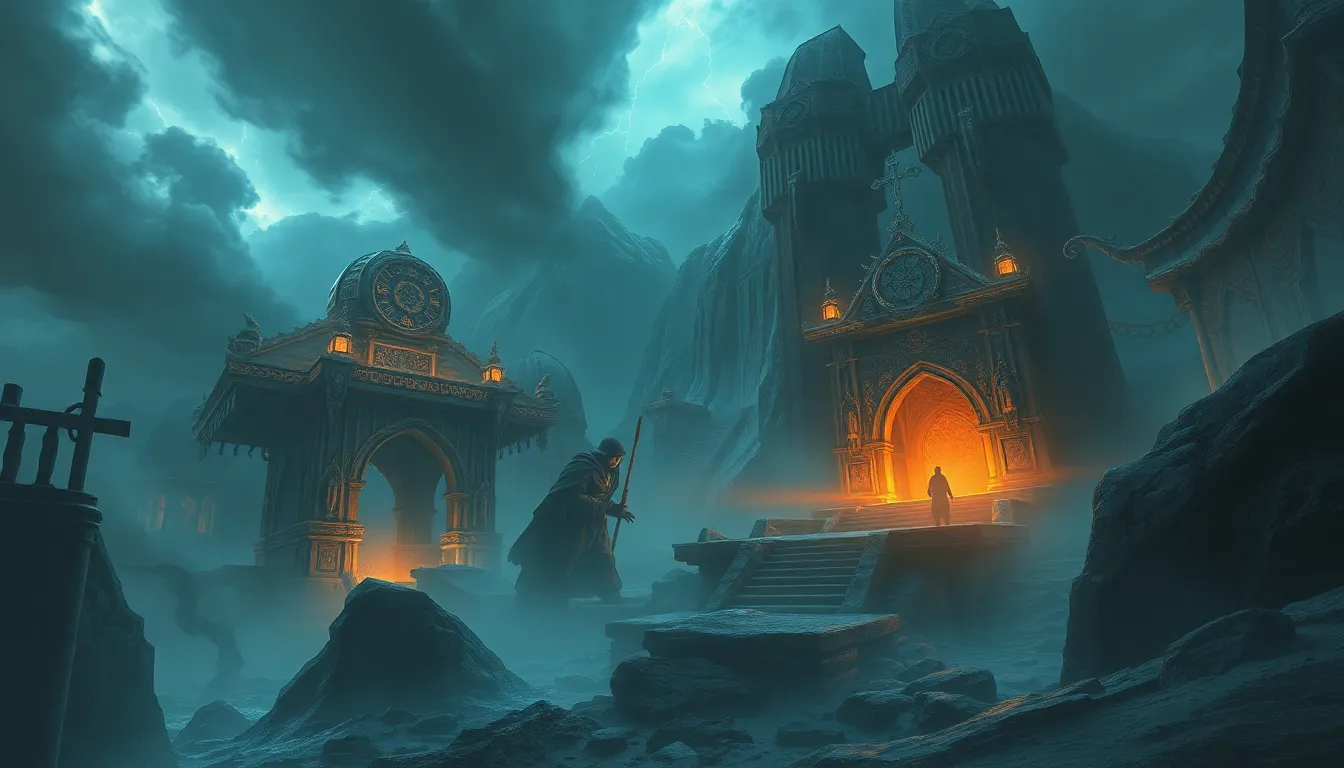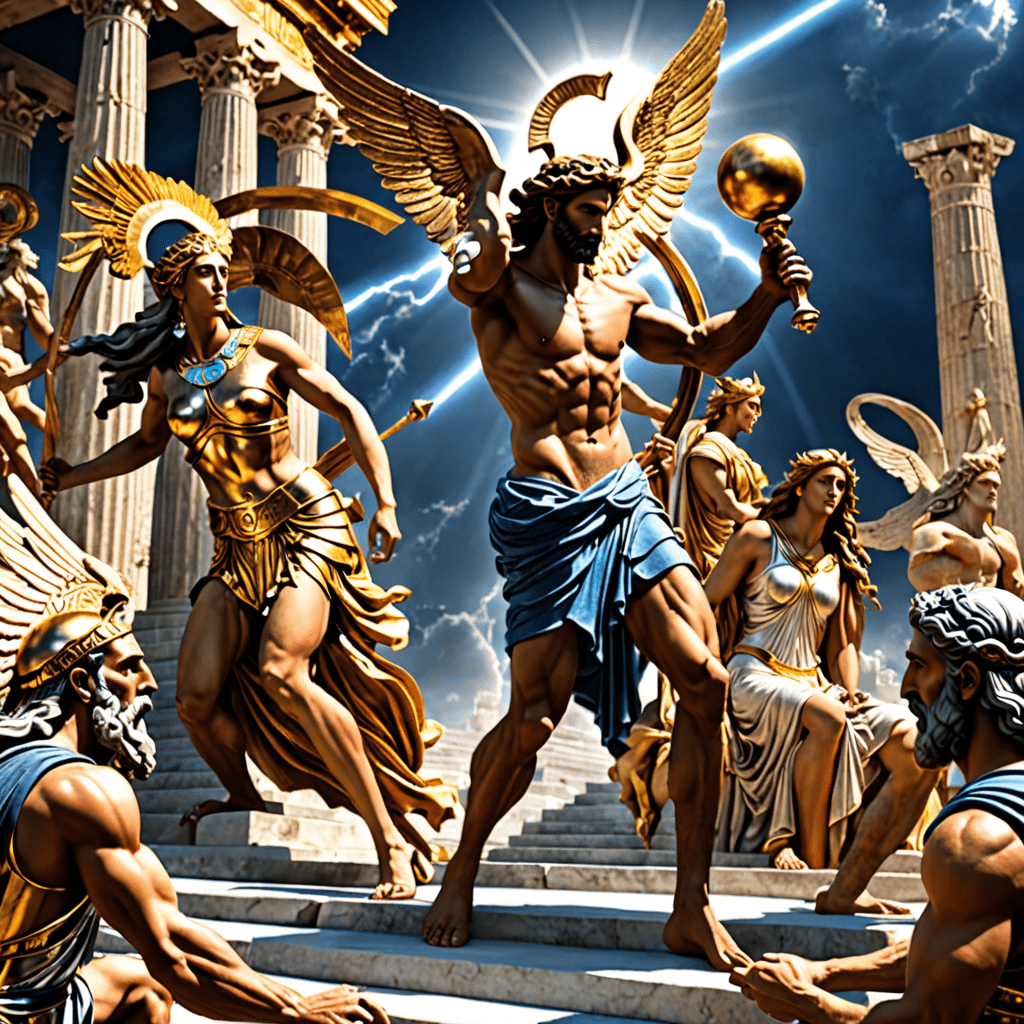Star-Crossed Lovers: Legendary Tales of Mythical Romance
I. Introduction to Star-Crossed Lovers
Star-crossed lovers are often defined as two individuals whose love is thwarted by external forces, typically fate or societal norms. This concept has permeated literature and mythology for centuries, serving as a powerful narrative device that highlights the struggles of love against overwhelming odds. The significance of star-crossed lovers lies not only in their tragic stories but also in the profound themes they explore, such as fate, sacrifice, and the human condition. This article aims to delve into the origins, notable examples, cultural interpretations, and the lasting impact of these legendary tales on literature and modern media.
II. The Origins of the Concept
A. Historical roots of star-crossed love in ancient cultures
The concept of star-crossed lovers can be traced back to various ancient cultures, where love was often seen as a force beyond human control. In many traditions, romantic unions were believed to be influenced by celestial bodies, with astrology playing a crucial role in determining compatibility.
B. The influence of astrology and fate in romantic tales
Astrology has long been associated with the idea of fate, where the stars and planets dictate the course of human lives. In romantic tales, this belief manifests in the notion that some lovers are destined to be together, while others are fated to be apart, leading to tragic outcomes.
C. Notable early examples in mythology
- The story of Pyramus and Thisbe from Ovid’s “Metamorphoses”
- The myth of Orpheus and Eurydice, illustrating love’s struggle against death
- Other ancient tales that highlight the theme of forbidden love and fate
III. Famous Star-Crossed Lovers in Mythology
A. Pyramus and Thisbe: The Tragic Tale from Ovid
Pyramus and Thisbe are perhaps one of the earliest examples of star-crossed lovers. Their love story unfolds in ancient Babylon, where their families’ longstanding feud forbids them from being together. They communicate through a crack in the wall and eventually decide to elope. However, a series of unfortunate events leads to their tragic demise, highlighting the devastating consequences of fate.
B. Orpheus and Eurydice: Love Conquers Death
The tale of Orpheus and Eurydice is another poignant example of star-crossed lovers. Orpheus, a talented musician, descends into the Underworld to retrieve his beloved Eurydice after her untimely death. Despite his enchanting music convincing Hades to release her, Orpheus’s inability to trust in their reunion leads to a heartbreaking conclusion. This story explores the themes of love, loss, and the struggle against impossible odds.
C. Romeo and Juliet: Shakespeare’s Timeless Adaptation
William Shakespeare’s “Romeo and Juliet” is arguably the most famous portrayal of star-crossed lovers in Western literature. Set in Verona, the young lovers’ relationship is doomed from the start due to their feuding families. Their tragic end serves as a powerful commentary on the irrationality of hatred and the purity of love.
IV. Cultural Interpretations of Star-Crossed Love
A. Variations of the theme across different cultures
The theme of star-crossed love manifests differently across cultures. For instance, in Eastern cultures, love stories often incorporate familial duty and societal expectations, while Western tales may emphasize individual desires and freedoms.
B. East vs. West: How cultures perceive fate and love
- In Eastern narratives, fate is often seen as a guiding force, with characters accepting their destinies.
- Western stories tend to focus on personal agency, where characters struggle against their fated paths.
C. The role of societal norms and obstacles in these narratives
In many star-crossed love stories, societal norms act as significant barriers. The lovers’ struggles often reflect broader themes of social injustice, class disparity, and the conflict between personal happiness and societal expectations.
V. The Role of Fate and Destiny
A. How fate plays a central role in these stories
Fate is a recurring theme in the tales of star-crossed lovers, often depicted as an inescapable force that dictates the course of events. The belief that certain love stories are preordained adds a layer of inevitability to their narratives.
B. The philosophical implications of predestined love
The notion of predestined love invites philosophical questions about free will. Are the lovers truly powerless against fate, or do their choices contribute to their tragic outcomes? This tension between fate and free will creates rich narratives that resonate with audiences.
C. Contrast between free will and fate in romantic choices
Many star-crossed lovers find themselves at a crossroads where they must choose between following their hearts and adhering to societal expectations. This conflict illustrates the struggle many individuals face in their own lives, making these stories timeless and relatable.
VI. The Impact of Star-Crossed Lovers on Literature
A. Influence on subsequent romantic literature and genres
Star-crossed lovers have left an indelible mark on literature, influencing countless romantic tales across genres. The archetype has evolved, yet the core themes of love, sacrifice, and tragedy remain prevalent.
B. Key authors and works inspired by the theme
- Jane Austen’s “Pride and Prejudice”
- Emily Brontë’s “Wuthering Heights”
- Modern adaptations in novels and films
C. The evolution of the archetype over time
While the archetype of star-crossed lovers has persisted, its portrayal has evolved with changing societal norms. Contemporary narratives often explore the complexities of love in the modern world, reflecting current issues such as identity, class, and cultural differences.
VII. Star-Crossed Lovers in Modern Media
A. Adaptations in film, television, and theater
The stories of star-crossed lovers continue to captivate audiences in modern media, with adaptations of classic tales appearing in films, television series, and theater productions. These adaptations often reinterpret the original narratives to resonate with contemporary audiences.
B. Examples of contemporary star-crossed narratives
- “The Fault in Our Stars” by John Green
- “Titanic,” directed by James Cameron
- “West Side Story,” a retelling of “Romeo and Juliet”
C. The relevance of the theme in today’s romantic storytelling
Despite societal changes, the theme of star-crossed love remains relevant. Modern storytellers continue to explore the challenges of love in the face of adversity, ensuring that these timeless tales resonate with each new generation.
VIII. Psychological Insights into Star-Crossed Love
A. The allure of forbidden love: Psychological perspectives
Forbidden love often captivates individuals due to its thrill and intensity. Psychologically, it can evoke feelings of excitement and urgency, driving people to pursue relationships that may not be socially acceptable.
B. The impact of societal pressures on romantic relationships
Societal pressures can significantly influence romantic relationships, leading individuals to question their choices. The tension between personal desires and societal expectations often complicates love, especially in the context of star-crossed lovers.
C. Long-lasting effects of star-crossed love on individuals
Experiences of star-crossed love can leave lasting impressions on individuals, shaping their perceptions of love and relationships. The pain of unfulfilled love can lead to personal growth, resilience, or even cynicism.
IX. Lessons Learned from Legendary Tales
A. Moral implications and takeaways from these stories
The tales of star-crossed lovers often carry moral lessons about the nature of love, sacrifice, and the consequences of societal constraints. They encourage reflection on the value of love and the cost of conflict.
B. How these tales shape our understanding of love and loss
Through their tragic endings, these narratives deepen our understanding of love and loss, illustrating that love, while beautiful, can also lead to profound sorrow.
C. The enduring appeal of romantic tragedy
The appeal of romantic tragedy lies in its ability to evoke empathy and introspection



